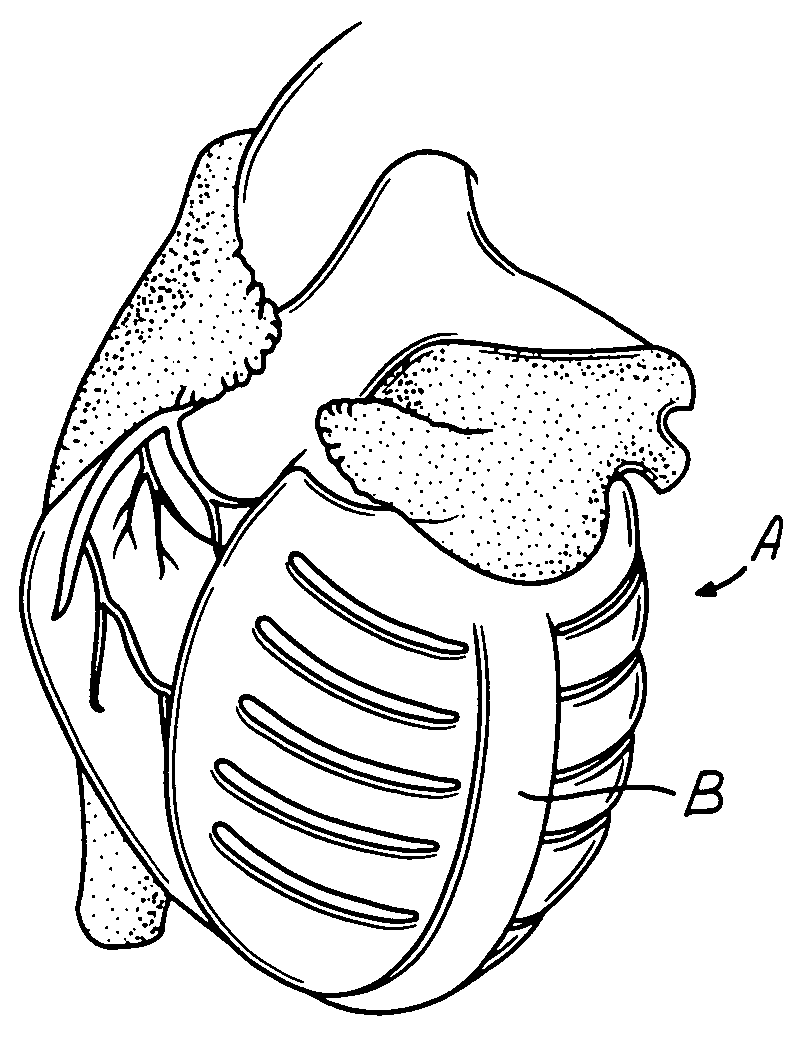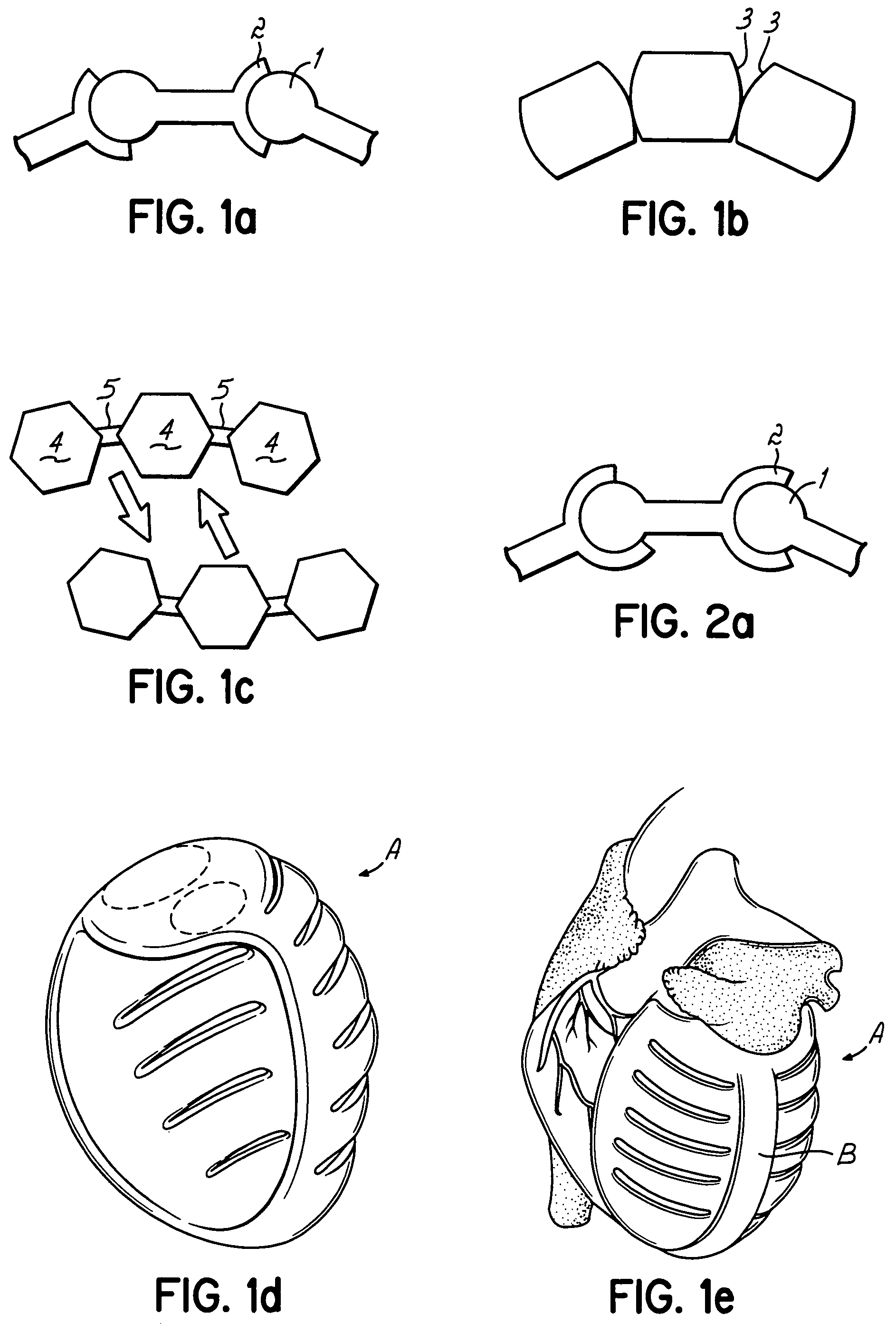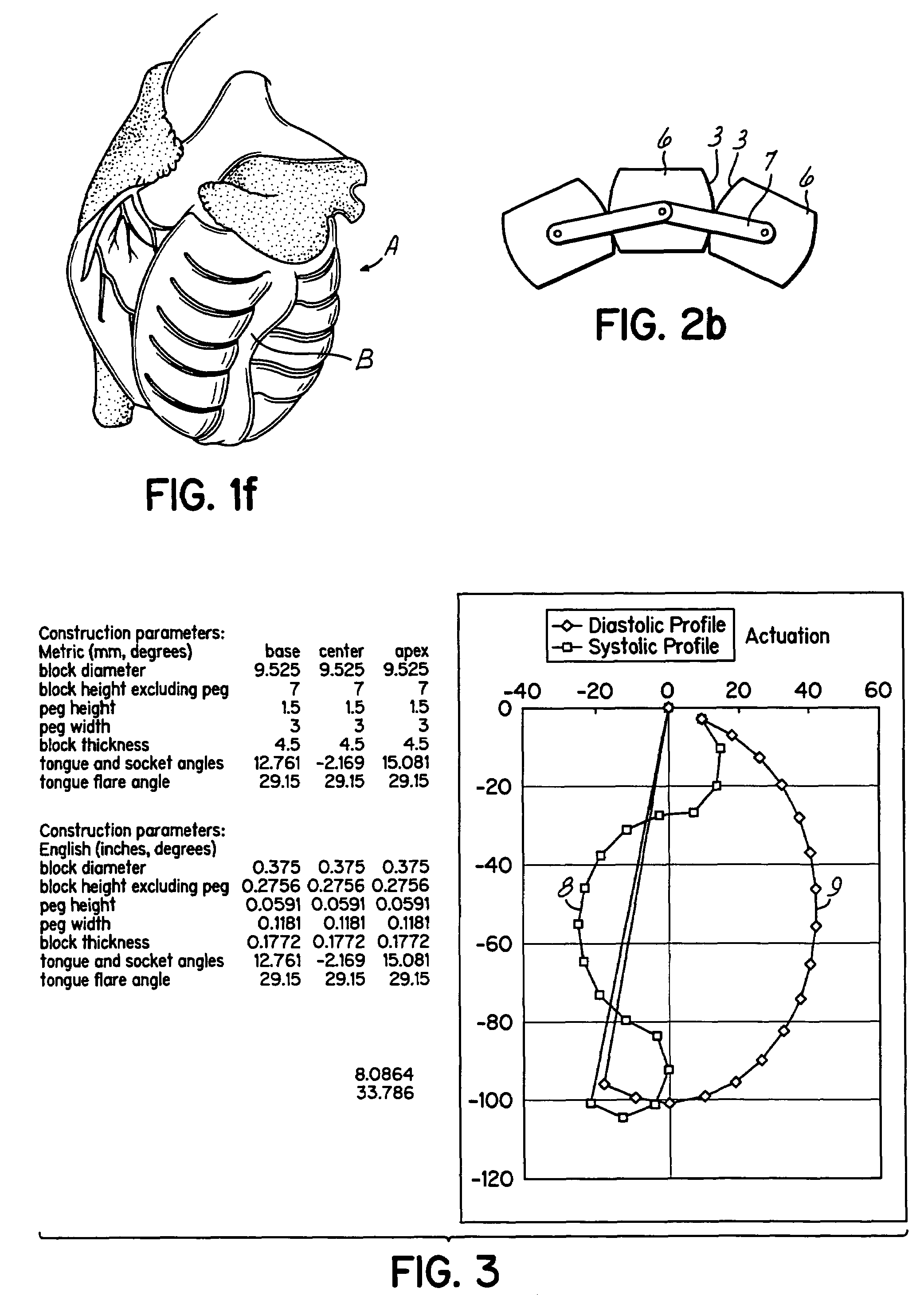Actuation mechanisms for a heart actuation device
a heart actuation and mechanism technology, applied in the direction of heart stimulators, prostheses, therapy, etc., can solve the problems of heart muscle degeneration, heart failure, and heart failure to provide sufficient blood circulation,
- Summary
- Abstract
- Description
- Claims
- Application Information
AI Technical Summary
Benefits of technology
Problems solved by technology
Method used
Image
Examples
Embodiment Construction
Part List
[0044]1. ball or cylinder for a sliding rotary articulation[0045]2. socket for a sliding rotary articulation[0046]3. convex rolling surface[0047]4. rigid element for a flexing linkage[0048]5. flexible element for a flexing linkage[0049]6. links[0050]7. tension member holding rolling links in position[0051]8. profile of an articulating link actuator in full actuation[0052]9. profile of an articulating link actuator in full relaxation[0053]10. rolling surface adjacent tongue component of a tongue-in-socket articulation[0054]11. rolling surface adjacent socket component of a tongue-in-socket articulation[0055]12. tongue component[0056]13. socket component[0057]14. depth of socket[0058]15. length of tongue[0059]16. arc of the mouth of socket[0060]17. arc of base of tongue[0061]18. margin of socket[0062]19. base of tongue[0063]20. base diameter of tongue[0064]21. flare angle of tongue[0065]22. impacting projection[0066]23. impacted depression[0067]24. pin[0068]25. hook[0069]26. ...
PUM
 Login to View More
Login to View More Abstract
Description
Claims
Application Information
 Login to View More
Login to View More - R&D
- Intellectual Property
- Life Sciences
- Materials
- Tech Scout
- Unparalleled Data Quality
- Higher Quality Content
- 60% Fewer Hallucinations
Browse by: Latest US Patents, China's latest patents, Technical Efficacy Thesaurus, Application Domain, Technology Topic, Popular Technical Reports.
© 2025 PatSnap. All rights reserved.Legal|Privacy policy|Modern Slavery Act Transparency Statement|Sitemap|About US| Contact US: help@patsnap.com



